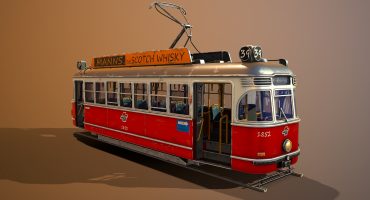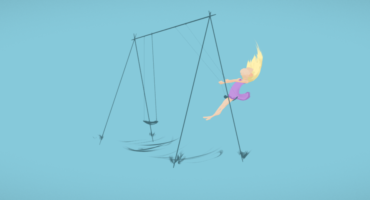Hey, I’m Fred Nolting from Austin, TX. I work at Arkane Studios as a Level Architect and got my start in 3D modeling and environment art at SCAD (Savannah College of Art and Design). As a hobby I model and kitbash in VR (mostly in Medium), creating characters and small vignettes. In the past year, I’ve been developing an art pipeline that is consistent and quick, where I can create a scene in one night (with a late sleep schedule).
I started out kitbashing using Medium’s stamps and reference meshes before moving into downloading and importing meshes. Overall the process and workflow remind me of the days of kitbashing miniatures for tabletop games.
Inspiration
This scene was part of a series of Snowpocalyptic Cool Kids, drawing inspiration from Snowpiercer and Frostpunk. I’ve recently been taking a lot of inspiration from modern runway fashion, power ranger villains, and custom action figures. Because I’ve been sourcing my meshes mostly from 3D scans, a lot of my scenes contain street fashion and contemporary attire. A few of the things I highly recommend checking out are BadLand Models, Drew Leshko, and follow on Twitter: @archillect, @BelgianBoolean, and @41Strange.
Workflow
When I start a scene first I look over all the downloadable 3D models from Sketchfab, starting mostly with 3D scans. Once I have a bunch of new models I pick out some of them, start erasing parts and cleaning them up.
When I am finishing all the cleanup and cropping, I will start smashing them together using the move and smooth tool. While combining the pieces, I will modify and sculpt from scratch: faces, hair, hands, and various things like hats and fabric folds.
Next, after all the kitbashing and sculpting is done, I will reduce and clean up in Zbrush and export to Maya. In Maya, I’ll create the scene including the base, lettering (Maya Text), icicles, and smoke.
Next, I export the character and scene separately into 3D Coat. Using auto UVing on import, I start painting.
Working with smart materials in 3D Coat, I apply the first layer of color and material values (roughness). The second layer is a tiled height/normal map to unify the surfaces and to add imperfections seen on metal miniatures. The third layer is a metallic gold highlight; most of this is done with an edge wear smart material. The fourth layer is snow, done by a smart material with downward projection. The final layer is an AO/dirt layer to add some volume and pop to the snow.
Finished with all the texturing, I go back into Maya to add the snow (Paint effects) and separate the different materials (ice, snow, lit end of a cigarette).
Uploading to Sketchfab
In Sketchfab, I start with base lighting and move on to materials. I use a lot of subsurface scattering, mostly to soften the overall feel of the scene. For the ice on the ground and tank, I used subsurface and clear coat.
I tend to use post-processing mostly for sharpness, SSAO, and color balancing to cool down shadows or to add some effect. With the snow cards, I left them untextured but with a mixture of depth of field, bloom, and sharpness; it created a neat effect, causing the cards in the distance to bloom out and flicker.
I’m still changing my workflow and working on my overall presentation and posing. I’ve never really done characters in 3D till VR, so every new tool and update is a huge surprise! I’ve noticed lately that when making art at home Sketchfab is the first and last site I’m on. For collecting meshes to work with or to render projects, Sketchfab has been a great tool to find and show art.
Thanks for reading.












